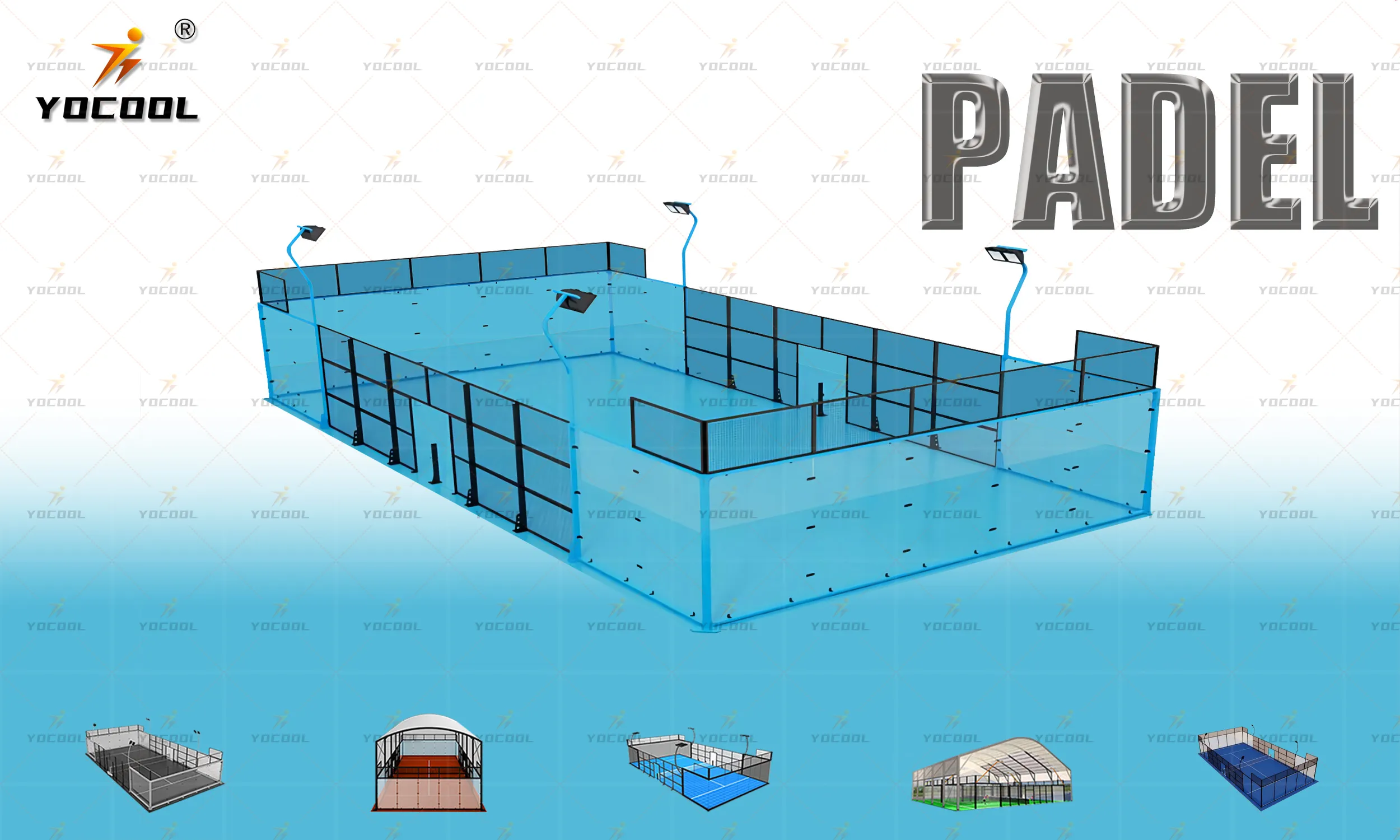

The Structure of Padel Courts in China A Comprehensive Overview
Padel, a sport that has rapidly gained popularity around the world, has found a growing audience in China. Combining elements of tennis and squash, padel is played on a smaller court surrounded by walls, making it accessible to players of all skill levels. Understanding the structure of padel courts is essential to appreciating the sport and its burgeoning presence in China. This article will explore the unique features of padel court construction, design considerations specific to the Chinese market, and the implications for players and enthusiasts.
Design Specifications of Padel Courts
A standard padel court measures 20 meters long and 10 meters wide, with a 3-meter-high wall on either side and 4-meter-high walls at the ends. The playing surface is typically made from materials that provide adequate grip, such as artificial grass, which is becoming increasingly popular due to its durability and adaptability to diverse weather conditions. In China, where climate can vary significantly from region to region, the choice of surface is crucial. Facilities are often designed to accommodate local weather patterns, ensuring players can enjoy the sport year-round.
The court is divided into two equal sections by a net that stands 88 centimeters high at the center. The layout also includes service boxes, which are used during serves and plays a critical role in gameplay strategy. The dimensions of these boxes and the overall court design enable exciting rally dynamics, promoting both fast-paced exchanges and strategic plays.
Construction Materials and Techniques
The construction of padel courts in China integrates both modern technology and traditional building practices. The walls of the court are generally made from tempered glass, enhancing visibility and allowing for the unique walls-to-play style of the game. This transparency invites spectators into the action, creating an engaging atmosphere for viewers, which is essential for promoting the sport's appeal.
Local building regulations and safety standards also influence court designs. In urban areas where space is limited, innovative solutions, such as multi-functional facilities that host other sports alongside padel, are increasingly common. These considerations highlight a growing trend in urban planning in China, where maximizing space usage is paramount.

Community Focus and Accessibility
As padel continues to grow in popularity, many developers are focusing on community-oriented designs that enhance accessibility. This is especially important in a country like China, where there is a growing demand for sports that encourage social interaction and healthy lifestyles. Padel clubs and courts are being developed in urban centers, with amenities that cater not just to players but also to families and spectators.
Many cities are investing in public padel courts, making the sport more accessible to the general population. These courts often come with added facilities such as lounges, cafes, and children’s play areas, promoting a family-friendly environment. As more people engage in padel, it contributes to a wider awareness and appreciation of health and fitness.
Implications for Players and Growth Potential
The structured approach to building padel courts in China serves as a cornerstone for the sport’s growth. For players, the designed courts provide a tailored experience that enhances gameplay and enjoyment. The inclusive design of these courts caters to varied skill levels, encouraging participation from beginners to seasoned players.
Furthermore, the rise of padel has significant implications for local economies. The construction of courts also creates job opportunities in areas such as coaching, event management, and facility maintenance. As interest in competitive play grows, there is potential for local and regional tournaments, which can further promote the sport and cultivate a vibrant community around it.
Conclusion
The structure of padel courts in China reflects a thoughtful design that serves the needs of players and communities alike. With their unique layout, modern materials, and community-centric focus, these courts are not just venues for play but catalysts for growth in this exciting sport. As padel continues to gain traction, the future holds promising prospects for players, coaches, and fans across the nation, reinforcing the sport's place within Chinese cultural and recreational landscapes.
High-Performance Industrial Flooring Solutions China Paddle Tennis Court for Sale
High-Performance Industrial Flooring Solutions Durable & Cost-Effective
Homogeneous Transparent Floor – Durable & Stylish Rubber Floor Solutions
Premium Homogeneous Transparent Floor for Durable & Stylish Spaces Rubber Floor Solutions
Premium Sports Floor Solutions Durable PVC Sports Floor & Rubber Floor for Gyms
Durable Rubber Composite Floor Premium Rubber Floor & Mats Solutions